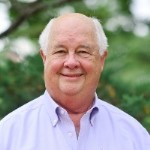Converting to Online Teaching
A series of short guidance articles for educators and institutions
SERIES ARTICLE
By John Cable, Director
Project Management Center for Excellence
A. James Clark School of Engineering
University of Maryland
College Park, Maryland, USA
Continuous learning is, or should be, a way of life for project managers and all members of the project team! According to a global survey[1] by Pearson in 2019 a “40-year career is gone, replaced by lifelong learning and diverse career paths”. Even if you have gone back to college and earned a master’s degree, the need to continue learning new knowledge and new skills is ongoing. Work assignments and demands are constantly evolving. According to this same survey, “People expect digital and virtual learning to be the new normal in the next decade” and the “shift to digital delivery is well-established & accelerating”.
So, what are your options? How do you work long hours, lead a healthy family and community life, and stay current? No, I have not found the secret to adding more than 24 hours in a day! But scheduling time to read, participate in your professional association, and take short courses on MOOC’s is the best way we have found to stretch the day! Simply block the time out on your calendar! For the reading component, simply subscribe to the Project Management World Journal, it is free and a global resource for sharing knowledge in Program & Project Management[2]. Ok, so what is a MOOC?
MOOC stands for “Massive Open Online Course” and they are free, open to anyone, anywhere, anytime! They are a flexible way to learn new knowledge and skills. MOOC’s grew out of the Open Educational Resources movement and the MIT Open Courseware Project and started to be introduced in 2006. From an educational perspective, the key breakthrough was the conclusive research finding that class size and learning outcomes have no connection[3].
By 2012 MOOC’s became very popular and several providers started to appear. Coursera, edX, FutureLearn, Khan Academy, and Udacity are a few of the more popular ones. One of the keys to acceptance was the credibility of top tier universities that were generating most of the content in the courses. Today, MOOC’s are widely accepted as acceptable credentials by numerous major corporations; IBM, Starbucks, and C3ai to name a few.
The MOOC’s ecosystem has been growing steadily and as you might expect with the Covid-19 pandemic has skyrocketed. According the Class Central[4] as of the Fall 2020 there are over 15,000 courses available with over 110 million active learners. Over 900 universities have posted content and in addition to the short courses there are approximately 50 MOOC-based academic degrees available.
More…
To read entire article, click here
Editor’s note: This series of articles by the Director of the University of Maryland’s Project Management Center for Excellence provides information and advice for converting from traditional in-person classes to online teaching, based on their experience before and during the Covid-19 pandemic of 2020.
How to cite this paper: Cable, J. H. (2021). Converting to Online Teaching: A series of short guidance articles for educators and institutions – Do You MOOC? PM World Journal, Vol. X, Issue I, January. Available online at https://pmworldlibrary.net/wp-content/uploads/2021/01/pmwj101-Jan2021-Cable-do-you-mooc-converting-to-teaching-online-9.pdf
About the Author

John Cable
Director, Project Management Center for Excellence
University of Maryland, College Park, MD, USA
![]()
John Cable is Director of the Project Management Center for Excellence in the A.James Clark School of Engineering at the University of Maryland, where he is also a professor and teacher of several graduate courses in project management. His program at the University of Maryland offers masters and PhD level programs focused on project management. With more than 1,300 seats filled annually with students from many countries, including more than 40 PhD students, the program is the largest graduate program in project management at a major university in the United States.
John Cable served in the newly formed U.S. Department of Energy in 1980, where he was involved with developing energy standards for buildings, methods for measuring energy consumption, and managing primary research in energy conservation. As an architect and builder, Mr. Cable founded and led John Cable Associates in 1984, a design build firm. In 1999 he was recruited by the University of Maryland’s Department of Civil & Environmental Engineering to create and manage a graduate program in project management. In his role as founder and director of the Project Management Center for Excellence at Maryland, the program has grown to offer an undergraduate minor, master’s degrees, and a doctoral program. Information about the Project Management Center for Project Management at the University of Maryland can be found at www.pm.umd.edu.
In 2002, PMI formed the Global Accreditation Center for Project Management Educational Programs (GAC). Mr. Cable was appointed to that inaugural board where he served as vice chair. In 2006, he was elected as chairman, a role he held through 2012. As Chair of the PMI GAC, John led the accreditation of 86 project management educational programs at 40 institutions in 15 countries in North America, Europe, the Middle East, Latin America and the Asia Pacific Region. John was awarded PMI’s 2012 Distinguished Contribution Award for his leadership at the GAC. He can be contacted at jcable@umd.edu.
To view other works by John Cable, visit his author showcase in the PM World Library at https://pmworldlibrary.net/authors/john-cable/
[1] “The Global Learner Survey” September 2019
[2] PM World Journal https://pmworldjournal.com/
[3] “Does Class Size Matter” by Daniel Barwick
[4] https://www.classcentral.com/ Class Central is a listing of online courses primarily free from universities offered on massive open online course platforms.










[…] article appeared in PM World Journal, Vol. X, Issue I, January […]